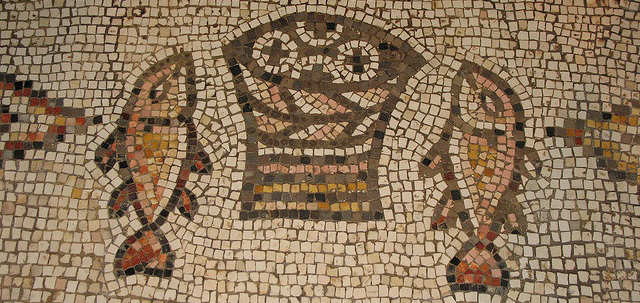Object Lesson for Adults (July 29, 2012): Measuring Miracles
 2 Kings 4:42-44, Psalm 145:10-18, Ephesians 3:14-21, John 6:1-21
2 Kings 4:42-44, Psalm 145:10-18, Ephesians 3:14-21, John 6:1-21
The Gospel story of Jesus Feeding the Multitude is a lot about numbers.
Use your fingers as your objects and start counting. Or for a modern flair, use a calculator.
- The boy had five barley loaves and two fish.
- There were 5000 in the crowd.
- When all had eaten their fill, the disciples gathered 12 baskets of leftovers.
Numerologists will read special meaning into these passages.
- Five barley loaves (five=grace)
- Two fish (two=witness)
- for a total of seven (seven=perfection)
- Twelve is the number of governance. (12 tribes, 12 disciples)
The story—at least for us today—is less about numbers and more about miracles.
The audience that day would have known the Old Testament story that is paired with this gospel. Elisha gives the orders in this story. People are fed. Food is leftover. It was no less newsworthy because this miracle fed only 100.
The New Testament narrative is meant to leave no doubt. Jesus can perform miracles—miracles that surpass Elisha’s and also surpass our expectations and satisfy our desires. Elaborate on this.
If you are celebrating Communion, do a quick calculation of how many might come to the altar a bit later in the service. Estimate the number that might be coming to other altars in other churches in your neighborhood and beyond at the same time. Add this number to the Bible’s 5000 and sense an ongong miracle.
